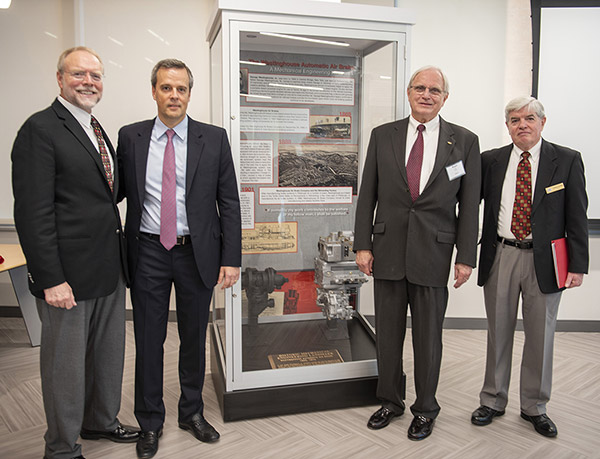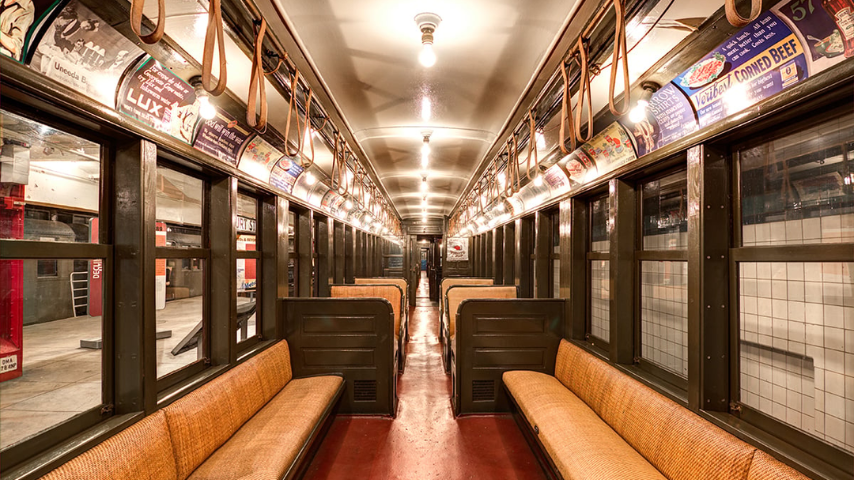Westinghouse Air Brake Designated as 273rd ASME Landmark
Westinghouse Air Brake Designated as 273rd ASME Landmark


The Westinghouse Automatic Air Brake, a fail-safe compressed-air braking system that improved railroad safety and led to the development of longer and faster locomotives, was recently recognized by ASME for its part in the evolution of the railroad industry. The air brake system was recently designated as the Society’s 273rd Historic Mechanical Engineering Landmark in a ceremony held earlier this month in Pittsburgh.
Approximately 150 people attended the landmark ceremony, which took place on October 15 at the new headquarters of Wabtec Corporation, the high-tech freight and transit rail supplier that began as the Westinghouse Air Brake Company in the late 1800s.
Attendees included ASME President-Nominee Bryan Erler, who presented the ASME landmark plaque to Rafael Santana, president and CEO of Wabtec, as well as members of the ASME History and Heritage Committee, Wabtec management and staff, plus a number of local politicians, including Pittsburgh Mayor Bill Peduto and Allegheny County Commissioner Rich Fitzgerald.
In addition to celebrating the air brake system’s designation as an ASME landmark, the ceremony also served as a ribbon-cutting for Wabtec’s new headquarters and marked the 150th anniversary of the patenting of the air-brake system.
Engineering pioneer George Westinghouse Jr. received a patent in 1869 for the system, which used compressed air to actuate the brakes on a locomotive. Westinghouse improved on his invention a few years later when he developed an automatic braking system in which all railroad rolling stock was equipped with an air reservoir and a control valve that kept the entire brake line pressurized. Any reduction in air pressure to the brakes, such as a separation of the train, would automatically trigger the braking system, bringing the train to a complete stop. Westinghouse’s system, which has been widely adapted in various configurations throughout the world, improved the safety of rail transportation and in turn led to the introduction of longer and faster locomotives.
Since it was established in 1971, the Westinghouse Air Brake is the latest of 273 artifacts to be designated as historic mechanical engineering landmarks, heritage collections or heritage sites through the ASME History and Heritage Landmarks Program. To learn more about the program, visit www.asme.org/about-asme/engineering-history/landmarks/about-the-landmarks-program.








